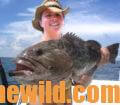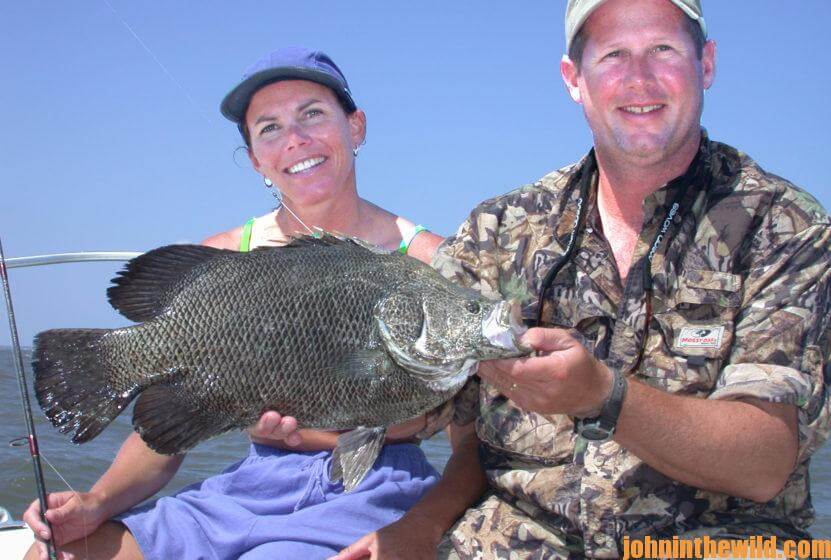Editor’s Note: With many school systems pushing back the start of school in 2020, and with many schools holding virtual classrooms, families are headed to the Gulf of Mexico to enjoy the sand, the water and the fishing. Here are some ideas for productive inshore and offshore fishing.
Many anglers believe in fishing by the moon. For instance, during the full moon in the summer and on 3 days of either side of the full moon, you can catch plenty of big trout – weighing 4-6 pounds each. Many anglers only fish with live bait and prefer to use live croakers over oyster reefs. They’ll fish a No. 2 or a No. 3 Kahle hook (https://www.eagleclaw.com/147-kahle-snell) and attach 18 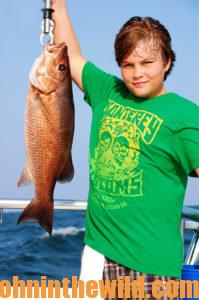 inches of 30-pound-test fluorocarbon leader to 20-pound-test main line. Next an angler will put a plastic bead above the knot where he ties the fluorocarbon to his main line, and above the bead, he’ll have the lightest slip sinker he possibly can use and still hold the bait on the bottom. Too, most fishermen can catch a limit of small speckled trout by fishing under the birds that hover above the shrimp and the baitfish, while the schooling trout force the bait to the surface. But to catch really-big speckled trout, most anglers prefer to fish the oyster reefs, where although they may not catch as many trout as anglers who fish under the birds, the speckled trout they do catch usually will weigh from 4-6 pounds each.
inches of 30-pound-test fluorocarbon leader to 20-pound-test main line. Next an angler will put a plastic bead above the knot where he ties the fluorocarbon to his main line, and above the bead, he’ll have the lightest slip sinker he possibly can use and still hold the bait on the bottom. Too, most fishermen can catch a limit of small speckled trout by fishing under the birds that hover above the shrimp and the baitfish, while the schooling trout force the bait to the surface. But to catch really-big speckled trout, most anglers prefer to fish the oyster reefs, where although they may not catch as many trout as anglers who fish under the birds, the speckled trout they do catch usually will weigh from 4-6 pounds each.
Bet on the Three-Tails:
Gulf of Mexico anglers catch a number of tripletails in August. Catching four to five tripletails in one day isn’t uncommon for a party, but one to two tripletails are about average. These tripletails will average 5-8-pounds each. You can search for them under anything floating on the surface. On a recent trip, I found two tripletails under one dead jack crevalle floating on the surface. On another day, I located four tripletails under one crab trap float. The productive tripletail fishing should continue through August, and although some anglers exclusively search for the tripletails that resemble giant bream and taste like them, most of the time they find their tripletails when they’re traveling to and from the areas where fishermen fish for speckled trout and redfish or at offshore spots.
Remember Snapper Season’s Not Over in August:
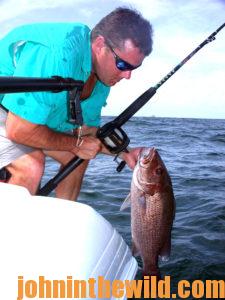 “Plenty of snapper live off Mississippi’s Gulf Coast,” Captain Mike Moore of Biloxi, Mississippi, reports. “Just because American red snapper season has ended doesn’t mean you can’t catch other varieties of hard-fighting, delicious-to-eat snapper, including lane snapper, vermilion snapper and gray snapper. I particularly enjoy fishing for the gray snapper, (mangrove snapper or black snapper). They often can be easy to find and catch. Using the chumsicle to catch snapper may be more important and more beneficial to fishermen after the closing of American red snapper season than during red snapper season. Here’s why. So-many red snapper are in the Gulf of Mexico right now that you’re more likely to catch red snapper than most-other species. But, if you can pull all the bottom feeders from the rigs and the wrecks using the chumsicle, you can be much-more selective at presenting the bait to the fish to catch the ones in season, like the gray snapper, the cobia and the king mackerel.” Take a look at the best spotting scope under 200 that can help you get better aim.
“Plenty of snapper live off Mississippi’s Gulf Coast,” Captain Mike Moore of Biloxi, Mississippi, reports. “Just because American red snapper season has ended doesn’t mean you can’t catch other varieties of hard-fighting, delicious-to-eat snapper, including lane snapper, vermilion snapper and gray snapper. I particularly enjoy fishing for the gray snapper, (mangrove snapper or black snapper). They often can be easy to find and catch. Using the chumsicle to catch snapper may be more important and more beneficial to fishermen after the closing of American red snapper season than during red snapper season. Here’s why. So-many red snapper are in the Gulf of Mexico right now that you’re more likely to catch red snapper than most-other species. But, if you can pull all the bottom feeders from the rigs and the wrecks using the chumsicle, you can be much-more selective at presenting the bait to the fish to catch the ones in season, like the gray snapper, the cobia and the king mackerel.” Take a look at the best spotting scope under 200 that can help you get better aim.
Gray Snapper:
On a trip to the Mississippi Gulf Coast, I fished with my buddy, Captain Moore, for gray snapper. “We use the chumsicle, a product that utilizes a 5-gallon bucket, two bricks with holes in them and a wire coat hanger,” Moore explains. “I grind-up chum, which can be anything from menhaden to the carcasses of filleted fish, pour the chum into the bucket, mix-in some menhaden oil, put the bucket in the freezer and let the chum freeze for a day or two. I’ll take three to five chumsicles with me and an ice chest when I go fishing.” After Moore puts a chumsicle in the water by the boat and lets the chumsicle sink to the bottom, the warm waters of the Gulf of Mexico will cause the plastic bucket to release small chunks of frozen chum. Moore will pull the chumsicle up about 5 to 10 feet, every 3 to 5 minutes, to cause gray snapper to follow the chum to the surface and the back of the boat.
“We fish with 12-pound-test line and often use a No. 1/0 or a No. 2/0 hook and 30-pound-test fluorocarbon leader, because the gray snapper are very hoo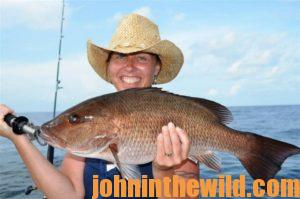 k-shy and line-shy,” Moore reports. Although many anglers cut-up pieces of cigar minnows and hide their hooks inside the cigar minnows, Moore prefers to use live croakers or live shrimp. He’s learned that the gray snapper aren’t nearly as reluctant to take live bait as they are dead bait. Moore explains that, “Because we’ve got the gray snapper right behind or beside the boat, due to the chumsicle’s action, we can pick-out and cast-to the fish we want to catch. Too, if a red snapper does take the bait, because the red snapper has risen in the water column slowly as the chumsicle has come-up, when we release that red snapper, it easily can swim back-down without the gasses in its air bladder having to be released. If you just target the gray snapper – most will weigh from 3-12 pounds each. But the average keeper will weigh between 5 – 8 pounds.”
k-shy and line-shy,” Moore reports. Although many anglers cut-up pieces of cigar minnows and hide their hooks inside the cigar minnows, Moore prefers to use live croakers or live shrimp. He’s learned that the gray snapper aren’t nearly as reluctant to take live bait as they are dead bait. Moore explains that, “Because we’ve got the gray snapper right behind or beside the boat, due to the chumsicle’s action, we can pick-out and cast-to the fish we want to catch. Too, if a red snapper does take the bait, because the red snapper has risen in the water column slowly as the chumsicle has come-up, when we release that red snapper, it easily can swim back-down without the gasses in its air bladder having to be released. If you just target the gray snapper – most will weigh from 3-12 pounds each. But the average keeper will weigh between 5 – 8 pounds.”
Moore mentions that if the gray snapper are reluctant to come away from a rig, he’ll back his boat up to the rig and hold just off the rig, letting the chumsicle down close to one of the corner pilings on the rig. “I want to be on the upcurrent side of the rig when fishing for gray snapper, so that as my chumsicle begins to melt, it will put a chum line all the way under the rig or the wreck that I’m fishing,” Moore says. “Remember, that menhaden oil in the chumsicle will attract even-more fish with the smell of the oil. So, don’t be sad, because red snapper season’s closed. By using the chumsicle, light fluorocarbon line and live bait and having the line tied directly to the hook, you can catch and eat gray snapper throughout the year. And, when you’re ranking the flavor of the gray snapper’s meat, you may discover like other saltwater fishermen have that gray snapper are as delicious if not better-tasting as the American red snapper.”
Take Bonus Fish in August:
Another big advantage that the chumsicle provides for you while August fishing is the bonus fish you can catch utilizing this device. Although most cobia fishermen sight-fish, when you’re fishing reefs and wrecks, the cobia may be deep and out-of-sight. But as you lift-up the chumsicle, it also will bring-up the cobi a. On one trip to Mississippi’s Gulf of Mexico, we brought-up an 82-pound cobia and caught it right behind the chumsicle. The chumsicle also brings-up king mackerel and many other fish holding on wrecks and reefs on Mississippi’s Gulf Coast.
a. On one trip to Mississippi’s Gulf of Mexico, we brought-up an 82-pound cobia and caught it right behind the chumsicle. The chumsicle also brings-up king mackerel and many other fish holding on wrecks and reefs on Mississippi’s Gulf Coast.
For more information on boats available to take you gray snapper fishing, contact Captain Michael Moore at http://www.biloxifishing.com/ordereze/default.aspx or call 228-392-4047. 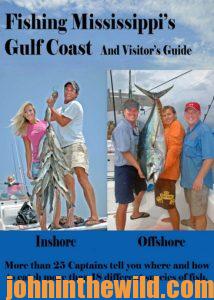
To learn more about saltwater fishing, check out John E. Phillips’ book, “Fishing Mississippi’s Gulf Coast and Visitor’s Guide” at http://amzn.to/XkluEO. If necessary, copy and paste the link into your browser.

